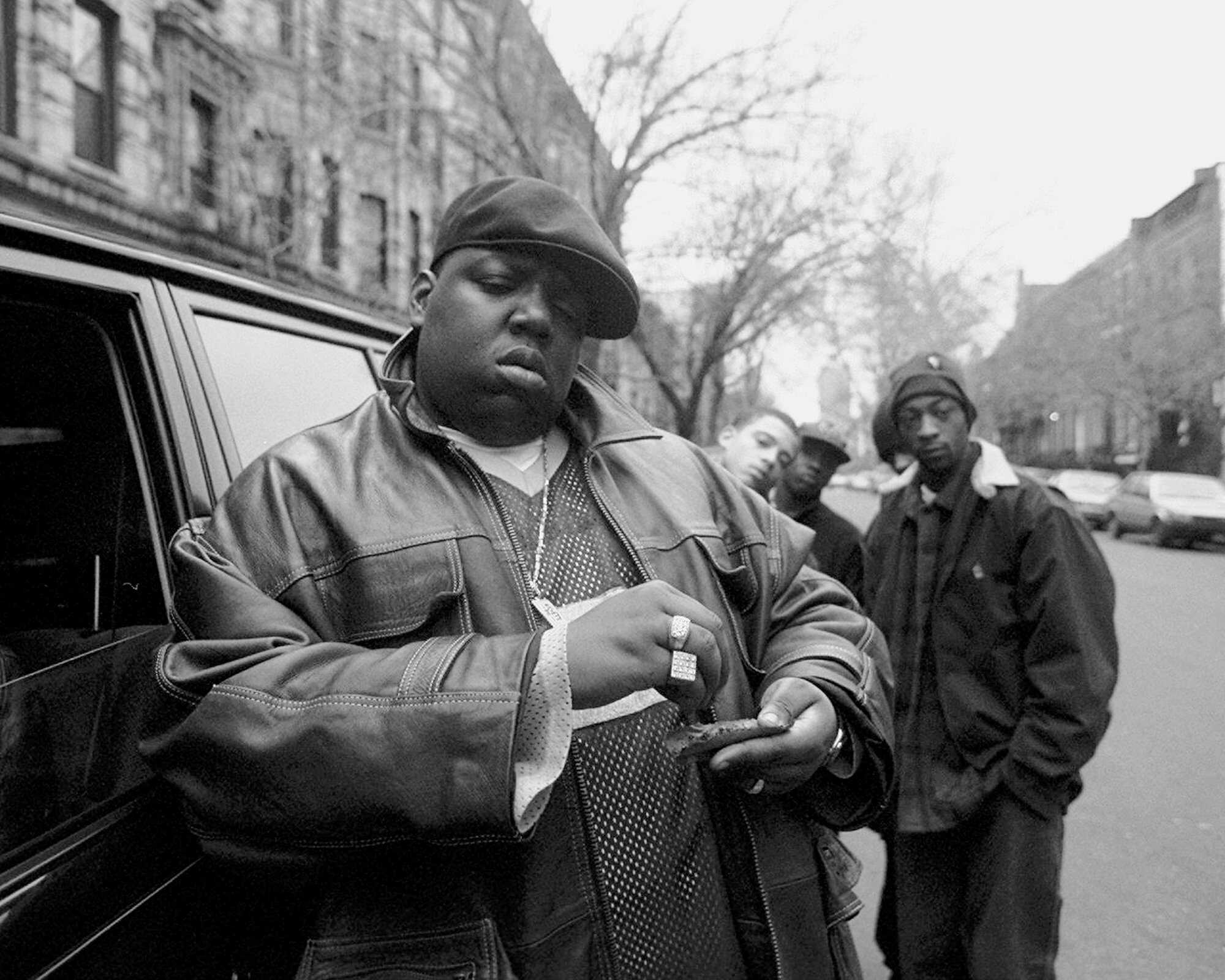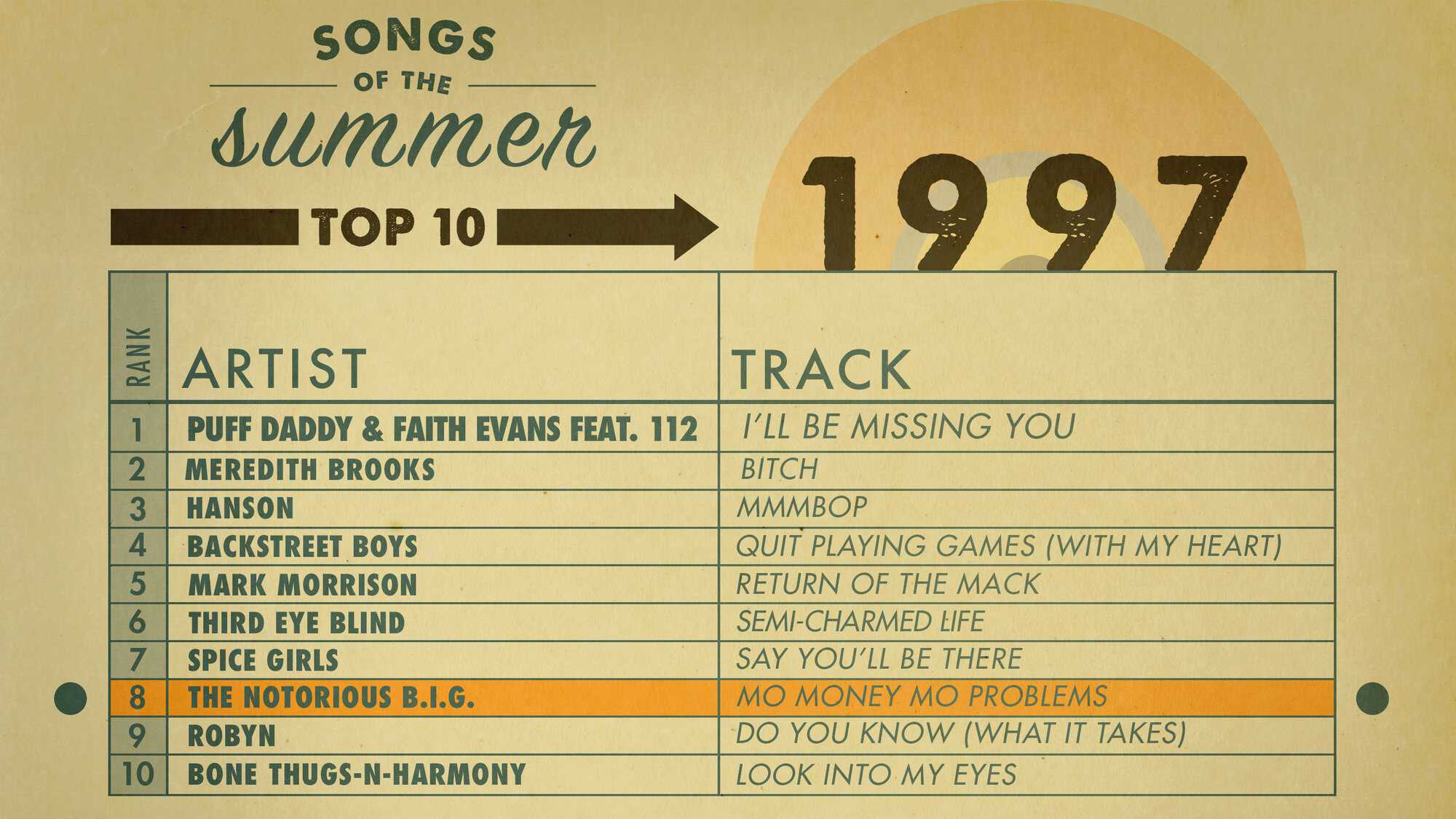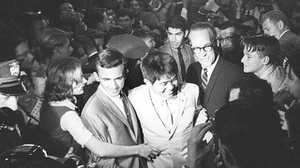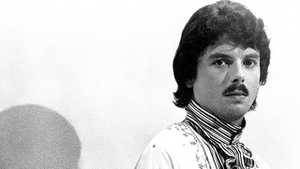No song announced hip-hop’s entry into the mainstream louder.
By Ismail Muhammad

In the early 1990s, there wasn’t a better model of hip-hop’s success than the rap group N.W.A. Founded by Dr. Dre, Ice Cube, and Eazy-E out of Los Angeles’s overlapping dance and hip-hop scenes, the group’s sound was an immensely popular evocation of life in post-industrial black communities. To promote N.W.A.’s initial releases, Eazy-E formed his own independent label, Ruthless Records. “Gangsta rap” songs like “Boyz-n-the-Hood” were hawked out of trunks to local DJ’s and radio personalities. An organic phenomenon that eventually gained national fame and notoriety, N.W.A.’s success caught corporate record labels by surprise.
By the summer of 1997, Ruthless Records’s model was obsolete: rap had experienced a seismic shift in sound and economic realities that catapulted hip-hop culture from the underground into the mainstream. As Jeff Chang explains in Can’t Stop Won’t Stop, the 1990s saw the American media landscape shrink until just a few corporations had a virtual monopoly over the music industry. Art becomes mainstream when there’s money to be made, and soon corporations began targeting hip-hop’s underground economy in the hopes of reaping massive profits. Corporations like Sony and AOL Time Warner brought some independent hip-hop labels under their control and used their power to push others out of business.

From this flush of corporate capital arose a new generation of rappers and entrepreneurs. They didn’t just want to be entertainers — they wanted to be business moguls. The producer Sean “Puff Daddy” Combs was at the forefront of these developments. In 1993, he founded his own label; Bad Boy Records would perfect a sound tailor-made for the times, a polished and futuristic aesthetic that reintroduced hip-hop to its origins in R&B, funk, and dance music like disco. In this sense, Bad Boy put a twist on New York boom bap — the onomatopoetic East Coast style of rap, which traditionally emphasized discordance and aggression over melody.
Artists like Mase, The L.O.X., Faith Evans, Stevie J, Deric “D-Dot” Angelettie, Easy Mo Bee, and Puff Daddy himself made music that sounded luxurious. They telegraphed their unabashed aspiration for wealth, sex, and power through liberal use of disco samples, horns, and cinematic-sounding string sections fit for a mafia epic. You could hear the metallic sheen of ‘90s prosperity rising off Bad Boy’s music. Most importantly, the label was home to a rapper who turned that sound into party music by delivering simultaneously melodic and intricate rhymes over Bad Boy’s production: the Brooklyn-born lyricist Christopher Wallace, known by his stage name, Notorious B.I.G. Perhaps no label entered hip-hop’s gilded age more enthusiastically than Bad Boy, and no song announced hip-hop’s entrance into the mainstream louder than Biggie’s 1997 Billboard #1 single “Mo Money Mo Problems,” off his eerily titled sophomore album Life After Death.
Biggie’s 1994, four-times platinum debut Ready to Die revealed a dexterous lyricist who was just as comfortable delivering raunchy lines about flirting with beautiful women and flaunting his prosperity as he was narrating a demented crime spree on the streets of Brooklyn. Ready to Die didn’t completely eschew old school East Coast aesthetics; the album’s production retained boom bap’s looping drums and disorienting, collage-like use of samples to connote tension and discordance. What’s more, Biggie’s lyrics were among the most bewilderingly complex in the genre, littered as they were with alliteration, dense internal rhymes, and abrupt shifts in cadence and rhythm that kept listeners on their toes. At a time when corporate interest in hip-hop provoked anxiety over the genre’s authenticity, Biggie honored New York classicism while turning the corner into the mainstream. He was, as he rapped on “Hypnotize,” “a nigga rappin’ ‘bout blunts and broads,” but whose rhymes still carried New York rap’s air of intricate menace.
Songs like “Big Poppa,” a slow party anthem that sampled the Isley Brothers’ “Between the Sheets,” made him an unlikely pop star. “Mo Money Mo Problems” was a song in that vein: it sounds as if Puff Daddy produced it so that audiences would dance the instant the song’s initial hi-hat and jangly guitar riff came through the speakers. Built on a sample of Diana Ross’ “I’m Coming Out,” and a refrain sung by the R&B artist Kelly Price, “Mo Money” was an exuberant nod to hip-hop’s roots in black dance music, and it harnesses disco in order to transmit that genre’s insistence on rapture, the possibility that utopia can be found on the dance floor.

In this sense, “Mo Money” was the apotheosis of Bad Boy’s maximalist aesthetic. To match the track’s opulence, guest rappers Mase and Puff Daddy crafted lyrics of megalomaniacal self-aggrandizement: Mase vows not to stop rapping until he sees his name on the side of a blimp, and Puffy boasts that he’s more iconic than Times Square. Biggie comes through at the end to emphasize his origins as a Brooklyn crack dealer and imagine himself on the cover of Fortune. The song is a refusal of the desperation that an entrenched economic disparity and the crack epidemic had imposed on black communities, and a paean to a kind of accumulation often denied black people. “You’d rather see me die than see me fly,” Puffy rapped at his verse’s start. He’s sneering at nameless rivals, but he might as well be speaking to America at large.
The single’s video, directed by Hype Williams, literalized that flight. It featured Mase and Puff Daddy floating in a chamber of pressurized air like astronauts, then jigging ecstatically in a black tunnel lined with fluorescent lights, all while wearing reflective jumpsuits. The visuals were a vision from a future where blackness slipped poverty’s grip and took on an otherworldly sheen.
Biggie’s only appearance in the video is as a specter. The rapper died at the age of twenty-four in a drive-by shooting in Los Angeles on March 9, 1997, a victim of the East Coast-West Coast rivalry between himself and Los Angeles rapper Tupac Shakur. Life After Death was released 16 days later, and would eventually sit atop the Billboard 200 before being certified diamond. His death marked the moment when the mafia movie-inspired gangsta rap that drove hip-hop’s mainstream success cannibalized itself, taking the lives of the genre’s greatest practitioners in the process. It’s difficult to hear Biggie’s gruesome mafioso-rap on tracks like “What’s Beef” — a series of chilling threats against his California rival — without feeling a sense that these artists were consumed by the characters they played in their music and that corporate profits were amassed on the backs of these black men’s deaths.
But there’s still the jubilance of that Diana Ross sample, the sound of black culture propelling itself out of the underground and into global preeminence. In the summer of 1997, when people danced to Biggie’s single, they weren’t just celebrating an artistic legacy that survived the rapper’s death. They were also celebrating a culture that had outlived the fate imposed on its creators.
Listen to the complete top ten from the summer of 1997 on Spotify.

Ismail Muhammad is a writer and critic based in Oakland, where he's a Ph.D. candidate at Berkeley, a staff writer for the Millions and a contributing editor at ZYZZYVA. His writing has appeared in Slate, the L.A. Review of Books, Real Life Magazine, and other venues. Find him on Twitter at @trapmotives.
Roll down the windows, turn up the volume and prepare to sing along as American Experience celebrates the music of the season with Songs of the Summer.
In 1958, Billboard launched its Hot 100, chronicling the songs that were flying off record store shelves, playing non-stop on juke boxes, and blaring through radio speakers. Almost sixty years on, how we listen to music and how we track a song’s success may have changed, but music remains a powerful force in our culture. Every Friday from June 2 through August 25, we’ll reveal one iconic song that hit the charts, accompanied by commentary from some of our favorite music writers. Explore our historical mixtape, and check back each Friday for our next track.
Published August 4, 2017.







